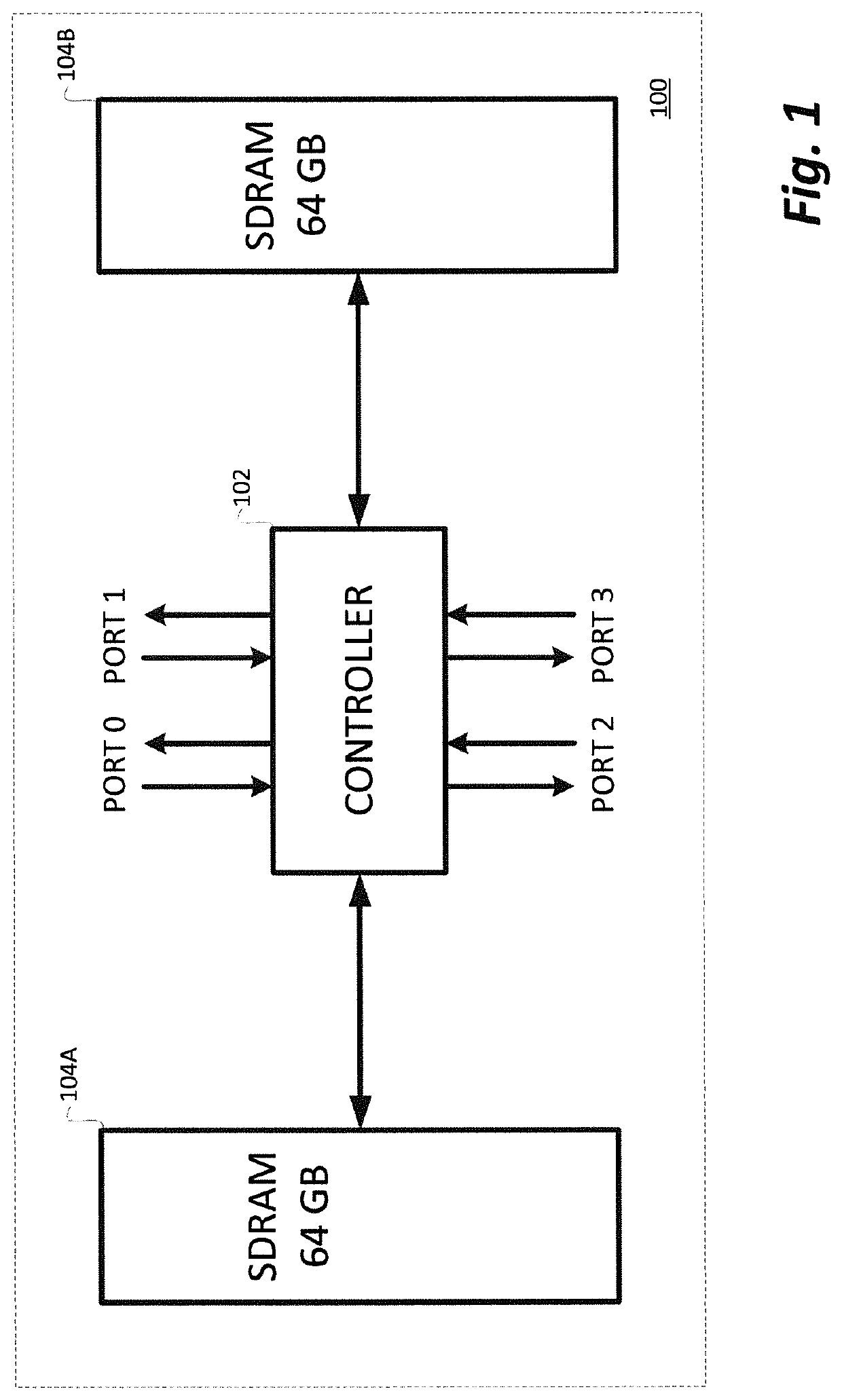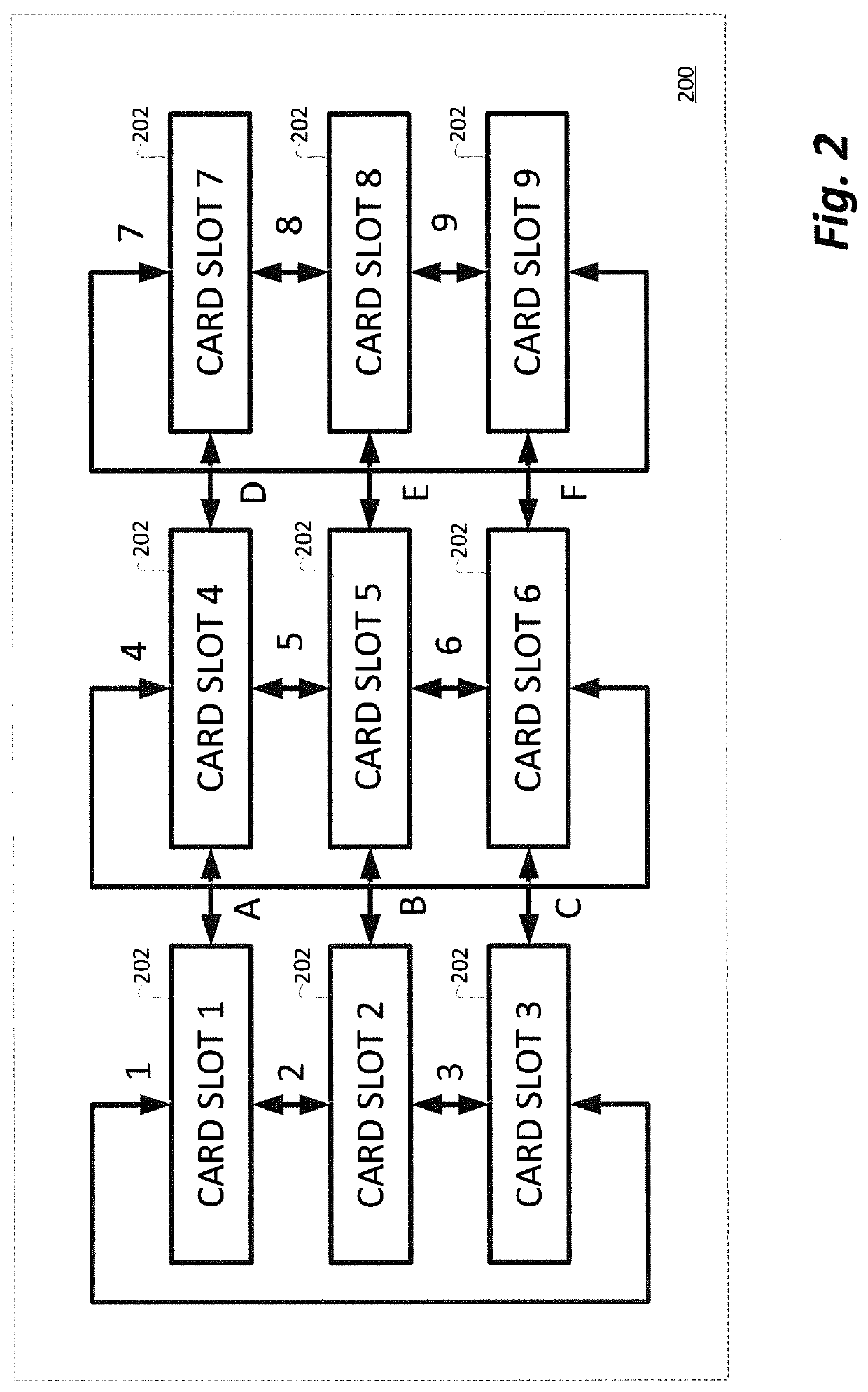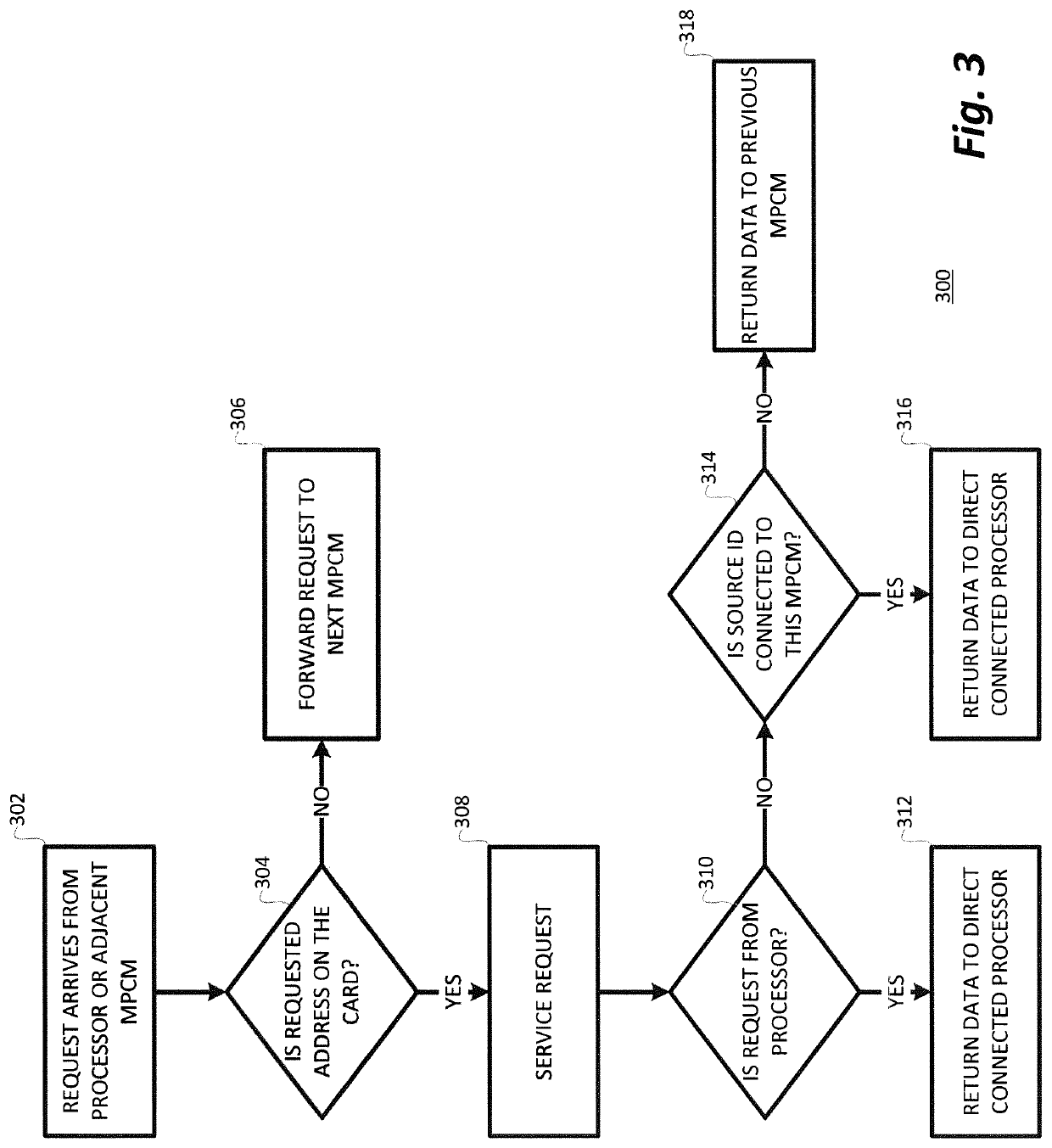Multi-processor computer architecture incorporating distributed multi-ported common memory modules
a multi-processor computer and common memory technology, applied in the field of multi-processor based computer systems, can solve the problems of consuming significant processing power and high latencies in memory access, and achieve the effect of convenient replacement of a portion of memory and convenient implementation
- Summary
- Abstract
- Description
- Claims
- Application Information
AI Technical Summary
Benefits of technology
Problems solved by technology
Method used
Image
Examples
Embodiment Construction
[0017]With reference now to FIG. 1 a functional block diagram of a representative embodiment of a multi-ported common memory module 100 in accordance with the present invention illustrative of an exemplary four-ported implementation is shown. The memory module 100 illustrated incorporates a four-ported controller block 102 and associated memory banks 104A and 104B although it should be noted that other numbers of ports can be provided by the controller block 102. The multi-ported common memory module 100 may be conveniently provided in a relatively small footprint card form factor for insertion in a computer baseboard or backplane as will be more fully described hereinafter.
[0018]The multi-ported common memory module 100 is designed to be utilized as a portion of a representative multi-processor computer architecture in accordance with that aspect of the present invention. As illustrated and described, a representative embodiment of the multi-ported common memory module may be conve...
PUM
 Login to View More
Login to View More Abstract
Description
Claims
Application Information
 Login to View More
Login to View More - R&D
- Intellectual Property
- Life Sciences
- Materials
- Tech Scout
- Unparalleled Data Quality
- Higher Quality Content
- 60% Fewer Hallucinations
Browse by: Latest US Patents, China's latest patents, Technical Efficacy Thesaurus, Application Domain, Technology Topic, Popular Technical Reports.
© 2025 PatSnap. All rights reserved.Legal|Privacy policy|Modern Slavery Act Transparency Statement|Sitemap|About US| Contact US: help@patsnap.com



